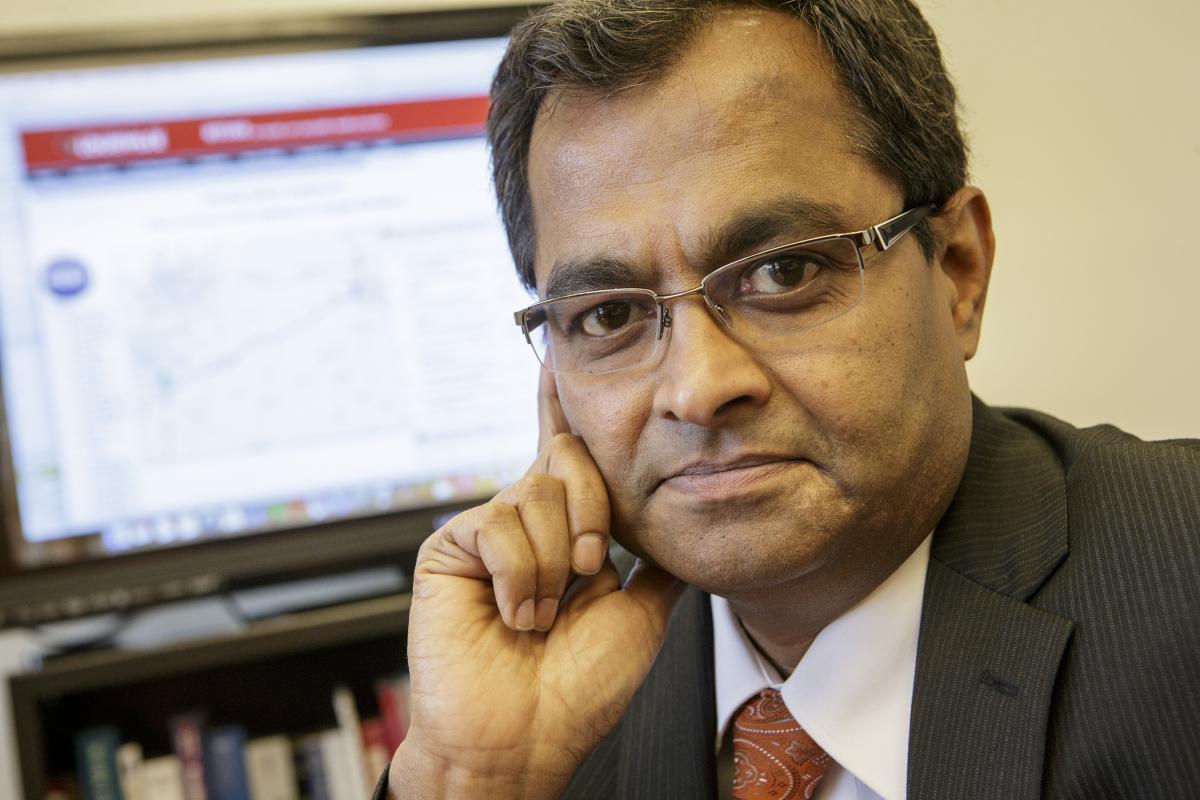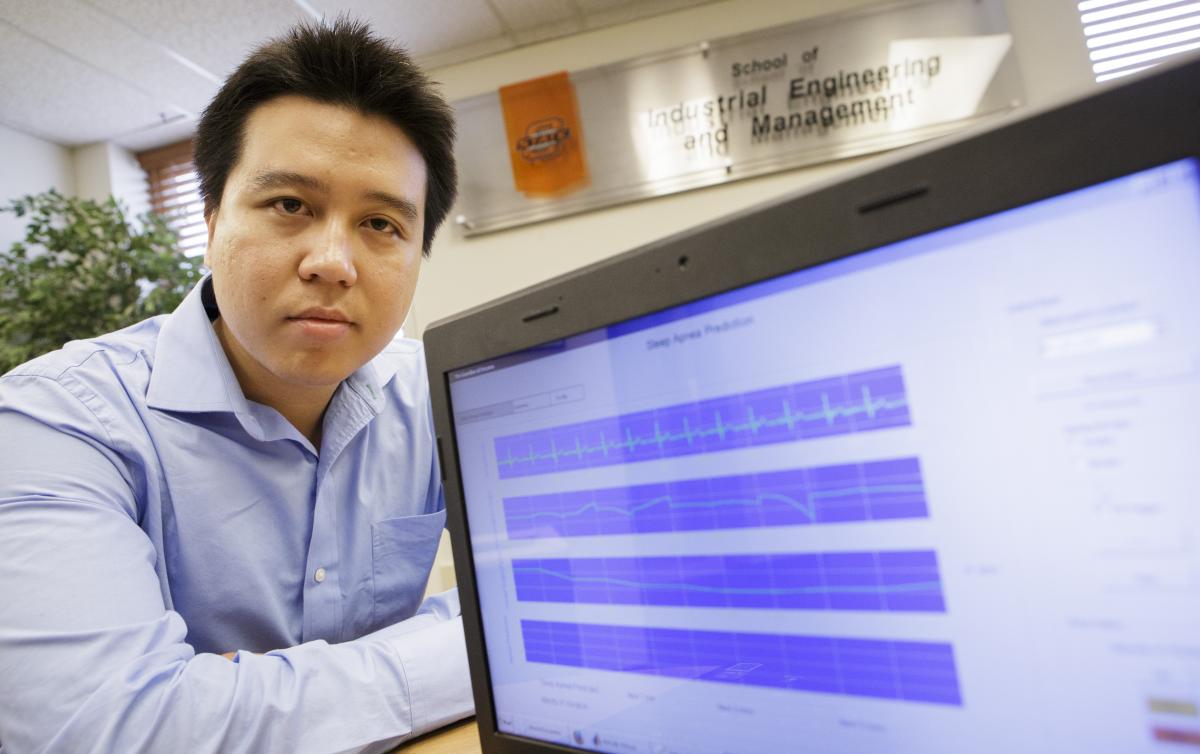Using Data in Health Care
Thursday, November 5, 2015

Several OSU industrial engineering faculty members and students are involved in research aimed at improving public safety and health with big data analytics.
Dr. Sunderesh Heragu, head of OSU’s School of Industrial Engineering and Management, is the lead investigator in an ongoing project to develop a decision support system for a pandemic influenza response. The pandemic response decision support system takes the guesswork out of making decisions during a public health emergency by pulling together information. For example, the system can determine which airport in a state or which routes would be best to receive shipments of aid.
Such a pandemic response decision support system determines the quickest, most efficient way to deliver vaccinations or other treatments, taking into account minute details such as the capacity of each vehicle, speed limits on the selected routes, traffic conditions, road repairs and weather conditions. It can even send the vehicle drivers pictures from DOT cameras on highways so that drivers en route can judge traffic tieups.
About 50 experts in health care, industrial engineering, and computer science have been involved in developing the pandemic decision support system over the past three years. The system is now in the process of being commercialized and has already been used in drills in Georgia, Kentucky, Alabama, Florida, North Carolina, South Carolina, Tennessee and Mississippi.
Heragu says decision support tools have been developed for public health officials, first responders and hospitals. One module has been used in a real-world mass vaccination clinic. In 2009, 19,000 vaccines were administered in 1½ days in a mass drive-through clinic in Louisville, Ky., a world record. Apps have also been developed for resource allocation. For example, as soon as a ventilator becomes available in a hospital, a nurse could swipe the ventilator bar code, and the database would be updated to show that the resource is available.
As another example, the resource allocation system could determine how many vehicles of different types are needed to evacuate patients from a hospital in the path of a hurricane and how to allocate these patients to other hospitals in unaffected areas. Other countries such as China are also interested in a resource allocation tool, which can be used for transporting resources such as grain during a famine or earthquake, a mobile hospital, pallets of food or any number of other resources.
“That’s what big-data analytics is all about — taking large amounts of data, mining through it, processing it, and then using the processed information to make real-time decisions,” says Heragu.
Industrial engineering faculty member Tieming Liu is also working to improve health care. Liu is using his data analytics skills with the large database of OSU’s Center for Health Systems Innovation, analyzing strategies to predict and prevent diabetes.

Industrial engineering doctoral student Woranat Wongdhamma, who worked with former faculty member Dr. Satish Bukkapatnam, is also conducting health care-related research. Wongdhamma and his research group have developed a wireless wearable multisensory system to detect sleep apnea.
Currently, the primary way to diagnose sleep apnea is through a sleep study performed overnight in a sleep lab. According to Wongdhamma, the waiting period for a sleep study could range from two to 10 months and could cost around $2,500.
Wongdhamma’s wireless wearable multisensory system uses an armband to record a patient’s EKG waves while the patient is sleeping in his own home. Using advanced statistical analysis and data mining techniques, the system analyzes the EKG patterns and determines whether or not a patient has sleep apnea and if so, its degree of severity. The wireless wearable multisensory system is so precise that it can determine if a person is going to have a sleep apnea attack within the next minute.
Because of the advance warning the system provides of an impending sleep apnea attack, the research project can be taken to a new level. Since sleep apnea is caused by upper-airway obstruction during sleep, a stimulus could be provided directly to the target muscles to prevent the collapse before it actually happens.
Wongdhamma says he feels good about working on a research project that will eventually be used to help people and could save lives.
Heragu also mentioned another industrial engineering student who is in the early stages of working on a similar idea for predicting and diagnosing bipolar disorder.
According to Wongdhamma, future health care is likely to be more personalized and less costly. The cost will be lower because the diagnosis process could be carried out at the patient’s home with the help of the Internet and wearable sensors. In addition, the health care analytics will help diagnose conditions before damage is done to a body’s systems, thus eliminating the need for costly medical procedures.
